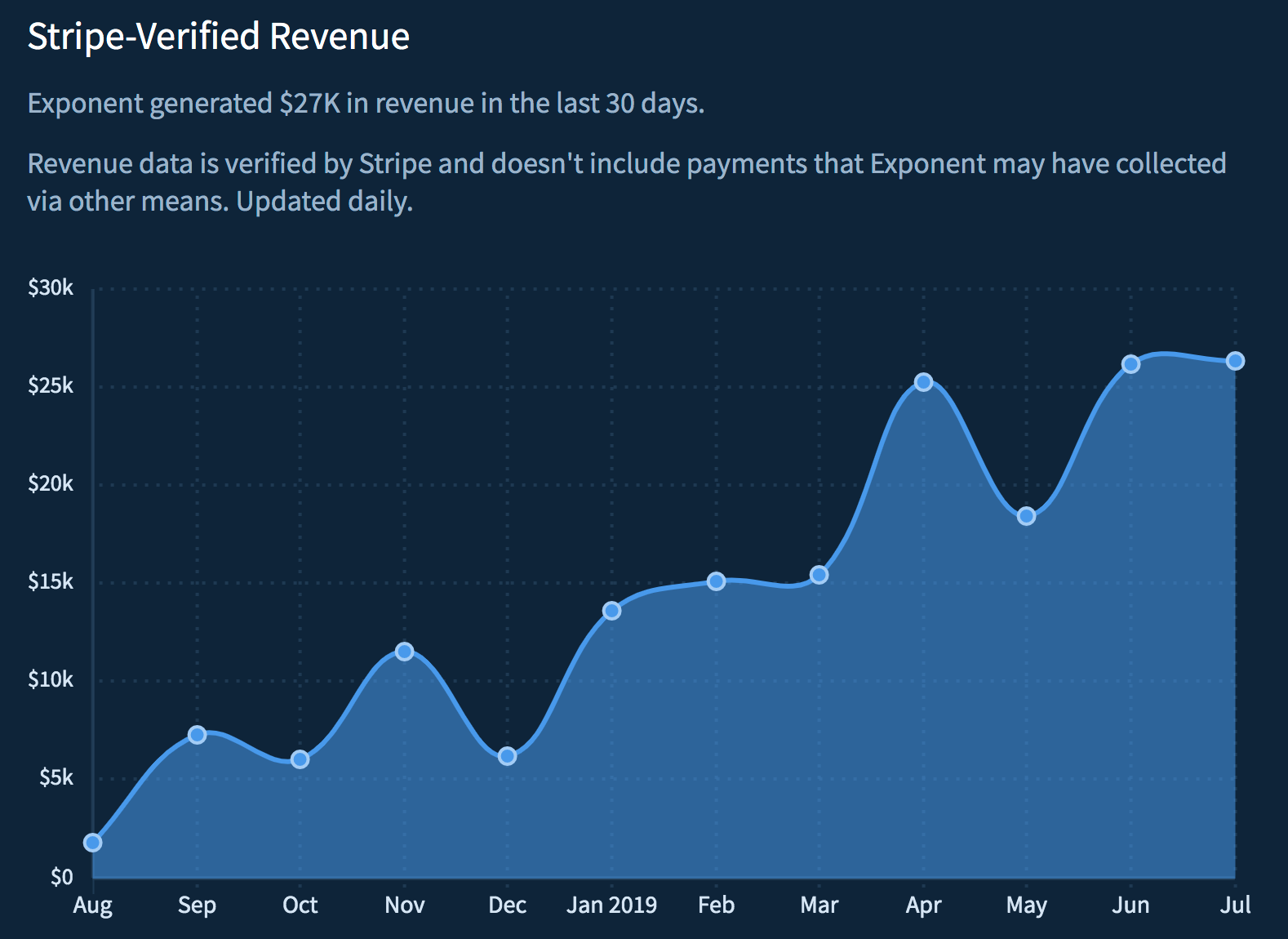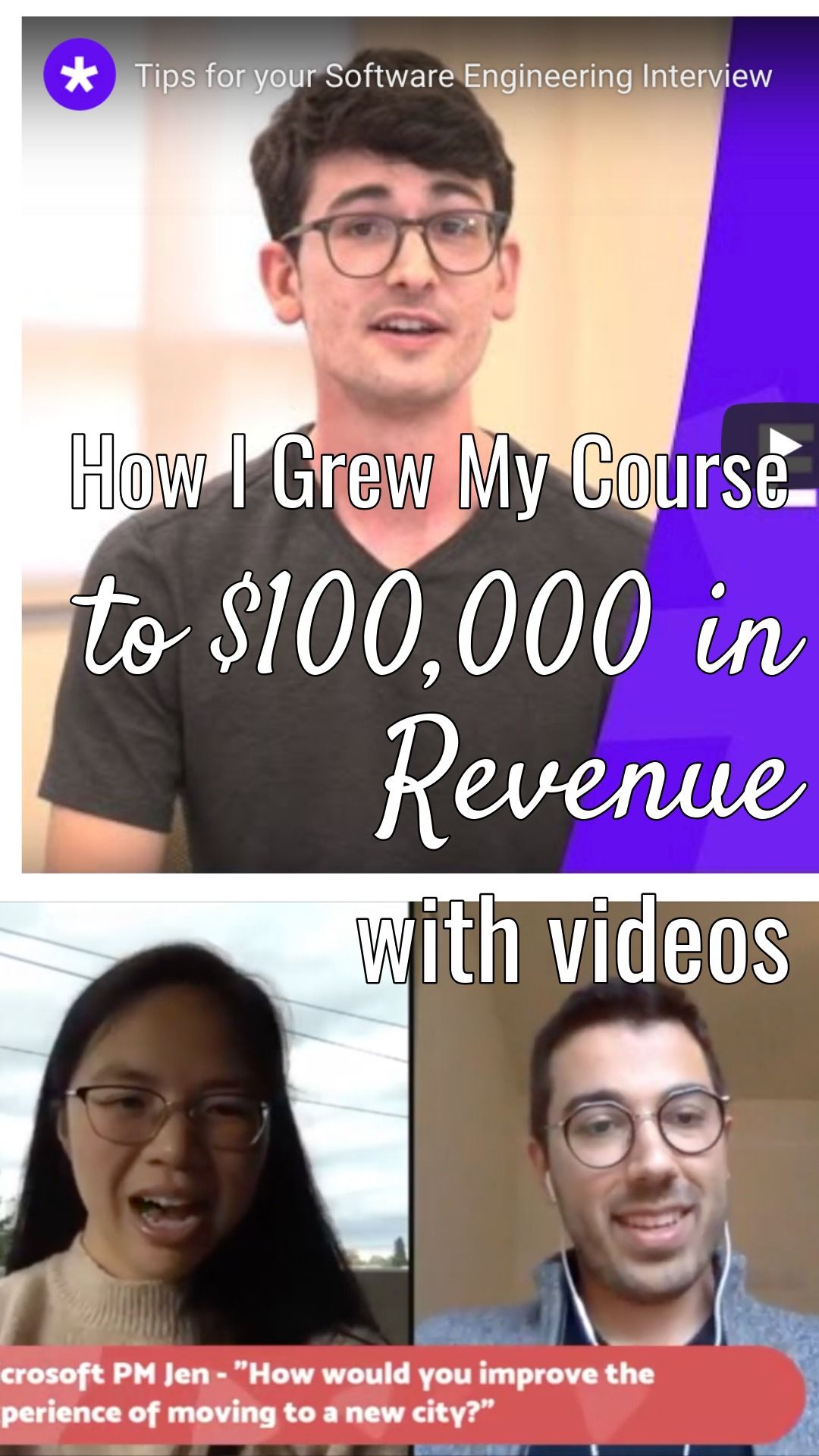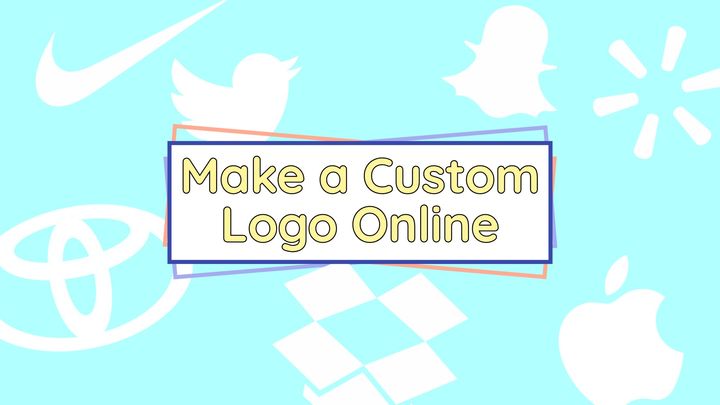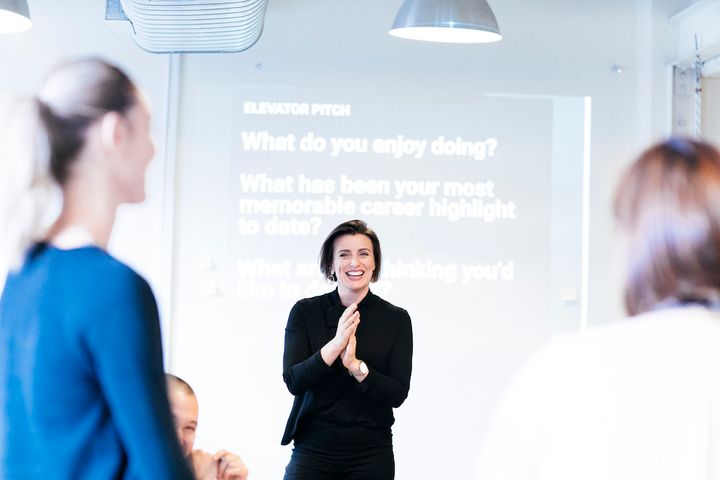How Exponent Grew a Course Business to $100,000 with Video Content
In 2018, two friends started a self-serve course business called Exponent that prepares job candidates for Product Management interviews. After six months in business on the side-hustle project, they had brought in more than $100,000 in sales.

In 2018, two friends started a self-serve course business called Exponent that prepares job candidates for Product Management interviews. After six months in business on the side-hustle project, they had brought in more than $100,000 in sales.
In this article, I share an interview with one of the two co-founders, Jacob, about how they used interactive questions and video content to grow Exponent to a six figure business.
How did you get started with Exponent?
Stephen and I went to college together, and we’ve worked together at a bunch of hackathons. Two years after we graduated, Stephen decided to take some time off and travel around America before starting business school in fall 2018. While he was traveling, he started coaching potential product manager applicants and doing practice mock interviews on the side. Given his past experience in product management at Google, it was a natural way to help people and earn a side income. Stephen got much more interest than expected, and in August, he got the team together. We set out to build an online version of Stephen’s practice interviews, and we originally called it PMLesson.
We signed up for a Stripe Atlas account, incorporated a business, and started building [the website].
How did you design the program?
We took a look at some other online courses like InterviewCake to get inspiration, then designed an interactive experience for students. We decided that the website would ask the student a starter question with free text entry, then asks follow up questions. The interactive text platform is a great way to learn, because you have stages instead of static content. At the end, after you’re done with a question, the site shows you a strong example answer.
How did you launch the course?
The first thing we had was 1:1 coaching, which people liked. Stephen mostly sourced his friends who were product managers or former product managers to be the coaches. Then, once the website was done, we added on a self-paced course with interactive questions. Customers purchased the course for a one-time fee.
The website got a lot of traction. People would purchase the course, then, if they wanted extra 1:1 help, we hired more coaches that they could work with. Eventually, we added resume reviews to the coaching package.
Why do you think Exponent was successful?
Exponent filled a gap in PM interview prep. There’s books and blogs that you can read, but it’s hard to get any interactive practice unless you know a product manager. Exponent takes a practice-based learning approach, which we’ve found to be far more helpful than existing methods. Also, candidates could practice on our library of sample questions that didn’t really exist online.
We created content that covered the whole funnel, from the structure of an interview to frameworks for answers to how you should conduct yourself. We have behavioral, analytical, design, and technical questions.

Right now, our videos are some of the best content in this domain on YouTube. There aren’t a lot of good examples online. So, the course curriculum reached an unmet demand.
How did you get into making videos?
We started experimenting with recording example answers to PM questions. At first, it was mostly a way to engage users who weren’t in our course and still provide valuable online content. YouTube referrals helped us grow the course. The first live mock interviews got a decent amount of traction, and we started including them in the course.
We wanted to increase the value of the course, so we asked people what they would like to see. When we surveyed people, the #1 request by far was for more videos. We thought people wanted more example questions. But actually they loved seeing visual content, knowing what a successful interview looked like by seeing it. Video was one of the #1 features that people mentioned as adding value to the course.
Plus, across different apps and the internet, people are generally more interested in video than they used to be. People now expect video for instructional content.
How do you make the videos?
We ask people with experience in product management to do mock interviews, a strong example for other candidates. We ask a question, an expert will do a sample answer, we ask follow up questions, give feedback, and we record the session. We don’t have to edit too much [before publishing].
Stephen is the personality in videos. Having that continuity - the same face and voice everytime - is important since students get to know his cadence and style. Learning from a single person is easier, although we might test out adding more variability in the future.
Some of the videos we put up on YouTube for free, and others are only accessible from the course. Most of the videos you can’t access without paying for the course. The live stream ones are mostly free and on YouTube. Right now, our channel has about one thousand subscribers. Generally the view count has been growing rapidly
[At the time of publication, Exponent has 2.7k YouTube subscribers. Their most popular PM interview has more than 20k views]
How do you edit the videos?
We’ve only learned how to make these videos through practice. None of us had previous video experience, although I think Stephen took one film class in college. We’ve invested in multiple recorders (in case one fails), lighting equipment, and a video camera to improve the quality of the shot. We record audio and video separately, then, using Final Cut Pro, sync audio and video together. Right now, there’s minimal editing. We add a watermark and title cards to show the expert’s name and cut out the bumpers, but that’s basically it.
The fact that the videos can be so valuable with no editing speaks to the usefulness of the content on its own.
There’s room to take editing further by putting more overlays in the videos. We want to try producing higher quality videos. Like, really polish the examples we show and make sure they’re high quality.
There are some things that are easy about videos. An hour of content takes an hour to create. But it’s hard to know when and how much to invest in the quality of the editing. It’s not easy to change things like branding retroactively since you have to take the older videos down and re-post them.
What’s next for Exponent?
We’re exploring launching courses in other verticals like software engineering and investing more in our platform for a better experience across the board. We’re now partnering with top-tier business schools to deliver our educational content to MBA students at large.
It’s clear that this set of content is useful for product management. For our next courses, we’ll likely start off with video since it’s been so valuable it’s been for our community.
Related articles:
- How Rachel Service Uses Digital Media to Grow Her Coaching and Training Business
- How Rebecca Anderson Uses Video to Educate the World About Climate Change
- How Cynthia Plotch Uses Storytelling to Grow a Mission-Driven Startup










